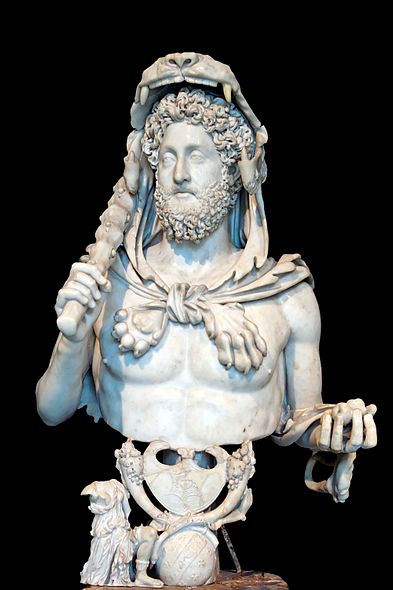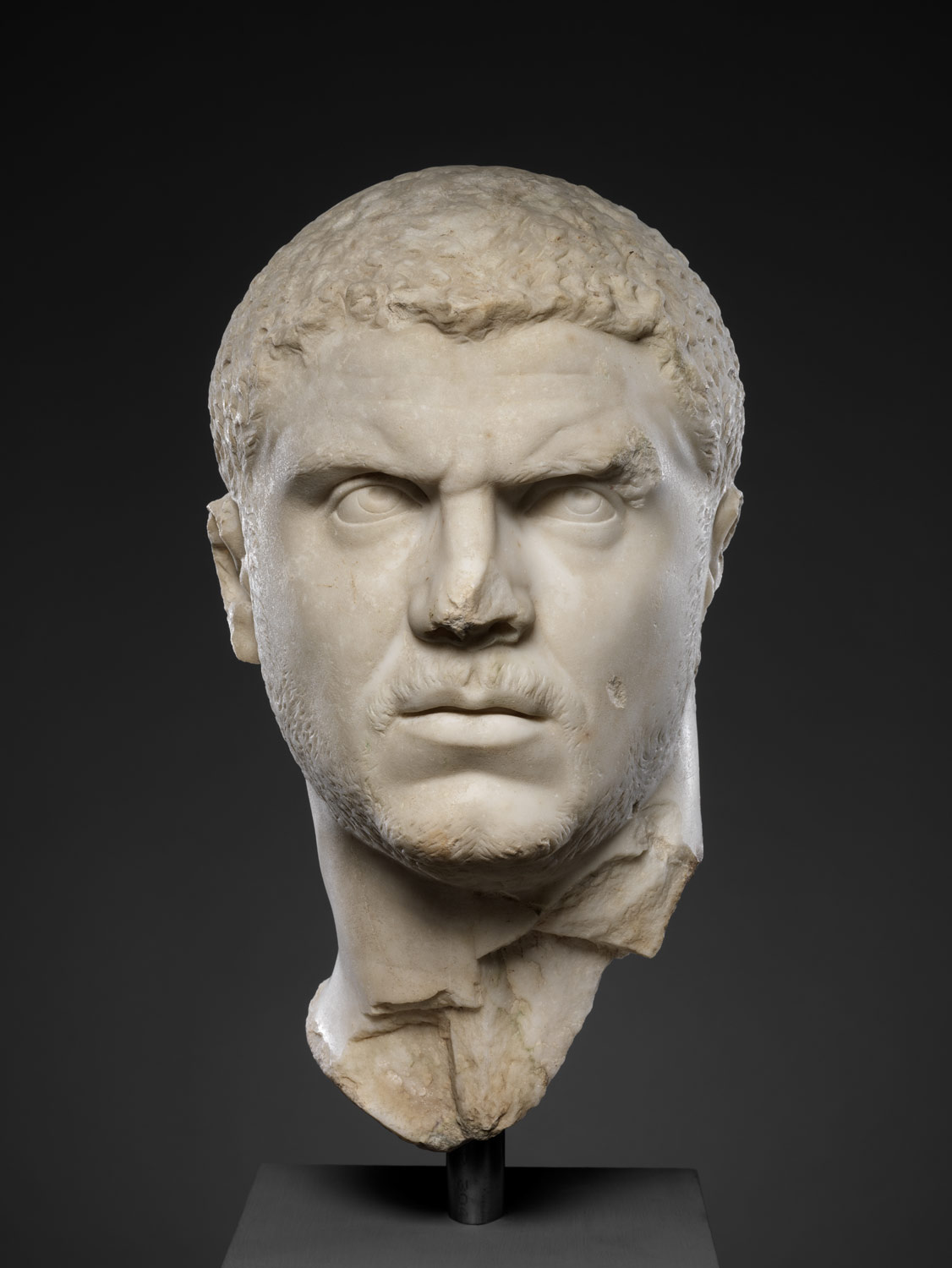The pieces featured Commodus as Hercules and the head of Caracalla are similar however provides some distinct differences that help to visualize how the rules portray themselves. The bust of Commodus as Hercules is made from marble in typical roman fashion. In the message, Commodus seems to not rely on himself to appear great, but has to relate himself to being a descendent of the gods in the form of Hercules. He is depicted very ornately featuring almost perfect features and muscles, armed with a club, apples, and a lion’s fur, with distance hair and beard. It seems like he is trying to get the viewers of this piece to relate his image with that of Hercules, however, now days we do not have a good idea of what Hercules looks like, so to us, it just looks like Commodus is going to great lengths to add to his appearance. The bust uses light to its advantage with the use of the lions head as a hood; it focuses the eyes on Commodus’s face. Overall the image tried to depict Commodus as a worthy ruler that can be related to the gods, signifying that Commodus has divine backing, because he has relation to Hercules.
The head of Caracalla, a bust as well, serves a use of propaganda but not in the form of presenting himself to be godly or appear to be someone he is not. Just like the bust of Commodus, this is made out of marble and is a piece of propaganda. This however, is where the similarities end. The head of Caracalla does not show humans in their perfect form like the bust of Commodus as Hercules does. Instead, Caracalla has lines in his forehead, and a very stern brow. He presents staring eyes, with an almost frown upon his face. Along with this, his beard and hair are very short and barely visible unlike Commodus who has very curly hair and beard. This piece portrays Caracalla as a very serious ruler, just looking at his face a viewer can tell that he is not easy going and has a lot of concern in his face. This is unlike Commodus, who seems to have a very perfect, neutral expression. Someone looking at this piece from this time period would be able to relate the face with the struggles the empire is facing at the time and know that Caracalla, the stern looking ruler takes things seriously, unlike Commodus who is just playing dress up. Even looking back today, not knowing the time period or Caracalla by appearance, we can discern that he is indeed a serious man. Looking at his face, it might even give the viewer a sense of fear if against this man, or a sense of safety knowing that he is in control. His serious expression is even added upon with the use of lighting with the darkness on the right side of his face and the darkness above these eyes. Looking at these pieces, one gets the sense of the periods they lived in relation to the Roman Empire. Commodus, coming out of the height of the empire, is carefree, and able to portray himself as whatever he wishes in perfect form. While Caracalla has a more simple serious representation of himself, with no time to or need to represent him as anything different.





I like how you say that Commodus just seems to be just playing dress up I found that very humorous. I agree with you when you say that you get the sense of time that they lived through just by looking at each bust.
ReplyDeleteI do agree that Commodus added the lion and other trophies to represent Hercules. I also think that those people that are familiar with the story of Hercules would understand Commodus. I agree with you that he head of Caracalla does not show humans in their perfect form like the bust of Commodus as Hercules does.
ReplyDeleteIt's cool how you say that each bust sort of tells a story of how each ruler handled their leadership. It is true that Caracalla, unlike Commodus, comes off as much more stern and/or concerned about the society that he handled than Commodus, with his soft expression and false portrayal of himself as Hercules.
ReplyDelete